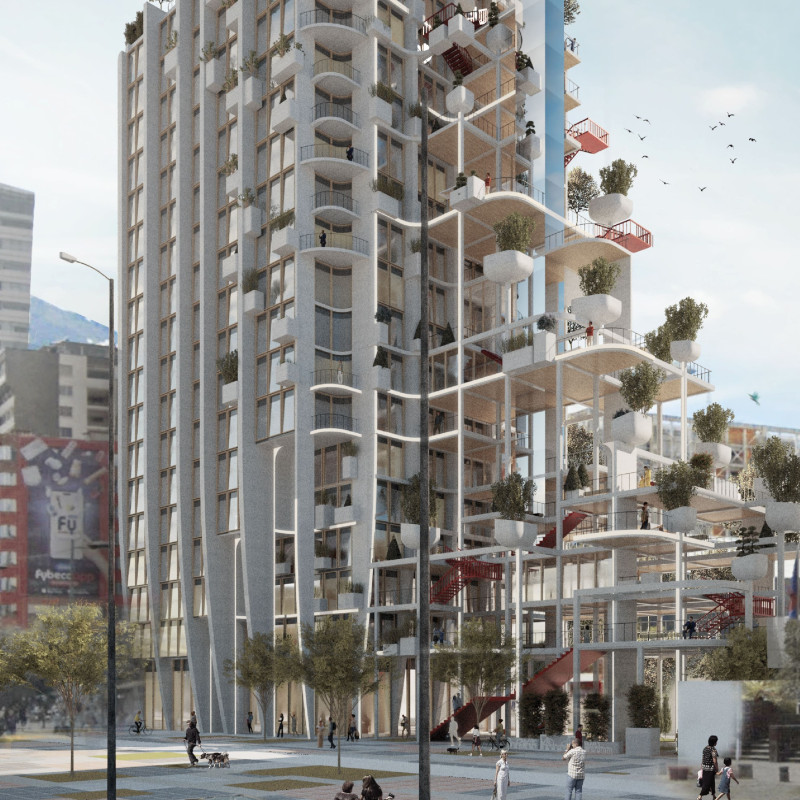5 key facts about this project
Functionally, the project is multifaceted, designed to cater to a variety of activities and gatherings. Its layout encourages interaction and collaboration among users, fostering a sense of community. Key areas within the structure include flexible spaces that can easily accommodate workshops, events, and social gatherings, alongside private areas designated for relaxation and contemplation. The effective circulation within the building allows for seamless movement, enhancing accessibility for all who enter.
Visually, the architecture presents a coherent language that reflects both contemporary aesthetics and local cultural influences. The façade, characterized by a combination of textured surfaces and large glazing elements, creates a dialogue with the environment. Using materials such as concrete, wood, and glass, the design achieves a balance between solidity and lightness. The concrete provides structural resilience, while the wood introduces warmth, making the space feel inviting and approachable. Expansive glass panels are incorporated not only for natural light but also to offer views of the surrounding landscape, reinforcing the connection between indoors and outdoors.
A distinctive feature of the project is its integration of green spaces, both within and around the building. Landscape elements are intentionally included to promote biodiversity and enhance the ecological footprint of the design. The incorporation of native plants not only reduces the need for water but also creates habitats for local fauna. Outdoor areas have been designed as extensions of the interior spaces, providing users with the opportunity to engage with nature while utilizing the building. These outdoor areas, which include terraces and gardens, are pivotal in enriching the overall user experience.
Moreover, the project adopts innovative design approaches to address environmental concerns. It employs energy-efficient systems and sustainable building practices that minimize its impact on the ecosystem. Features such as rainwater harvesting systems and energy-efficient HVAC solutions illustrate a commitment to reducing energy consumption and enhancing sustainability. These design decisions not only serve functional purposes but also communicate an awareness of the architect's responsibility to the environment.
The careful detailing throughout the project contributes significantly to its overall impact. Every aspect of the design has been scrutinized to ensure it serves a purpose, whether it be promoting social interaction or enhancing the experiential quality of the space. The architectural sections reveal a thoughtful approach to structural design, showcasing how different elements interact without compromising the aesthetic qualities the project aims to achieve.
Ultimately, this architectural design is a testament to what can be accomplished when thoughtful planning and creative design converge. It illustrates how spaces can be designed to fulfill multiple functions while being sensitive to their context. Readers are encouraged to explore the project presentation further to gain a deeper understanding of its architectural plans, architectural sections, architectural designs, and architectural ideas. Such exploration will highlight the project’s unique characteristics and the innovative thought processes behind its creation.


 Adrian Paocarima Herrera,
Adrian Paocarima Herrera,  Kevin Daniel Arroyo Males
Kevin Daniel Arroyo Males 




















